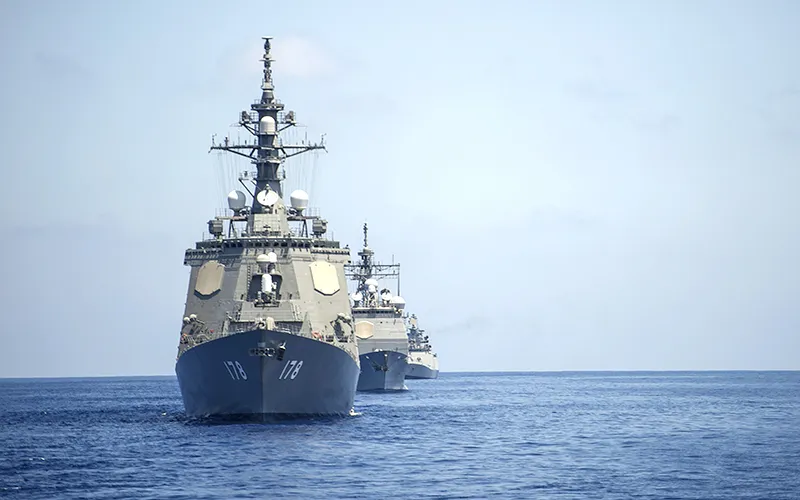This year's edition of the India-US naval exercise 'Malabar' masked the limitations of the much-commented upon India-US military cooperation and claims of inter-operability. The lack of any so-called 'foundational agreements' governing military cooperation between India and the US limits any meaningful progress. Also evident was the Indian Navy's contribution to the Malabar exercise, which reflects New Delhi's penchant for hedging against the prospect of Chinese opposition.
The reported lack of enthusiasm in increasing the number of participating ships and aircraft by the Indian Navy reflects the susceptibility of the Indian establishment to cave in to Chinese sensitivities. From a peak contribution of eight warships in 2007, the number has dropped to four this year. According to reports, it had to be cajoled by the US into increasing the number of ships and aircraft from the previous years. It did not deploy any aircraft carrier or any land-based fighter aircraft for the exercise.
Further impeding the progress of India's increasing military engagement with the US and its allies is the inability of Indian forces and US forces to communicate. The lack of commonality in communication systems has resulted in a peculiar arrangement. The US Navy installs and mans communications systems aboard every Indian Navy ship during these annual exercises to communicate over a network called CENTRIX (Combined Enterprise Regional Information Exchange System).
The use of CENTRIX requires a common set of networks built on a set of standard hardware and software. It enables information-sharing amongst allies and partners enabling coordinated joint operations. Communications will be the key in any future scenario where India and the US operate together. Hence, claims citing increasing interoperability have been misguiding, given that even voice communication still needs to be conducted over unsecure open radio channels vulnerable to interception by rival forces.
Even operating common equipment has not alleviated the problem. At this year's exercise, India and the US contributed one Boeing P8 maritime patrol aircraft each. The lack of any foundational agreement between the US and India meant the aircraft were delivered after they were stripped of advanced navigation and communication equipment. The Indian Navy's P8Is cannot exchange and transmit any data securely with US ships and similar aircraft.
Several agreements that would enable greater cooperation between the Indian and US Armed Forces have faced opposition in India. Some of these agreements, like the Logistics Support Agreement, would facilitate increased use of shared logistical services. Similarly, agreements like the Basic Exchange and Cooperation Agreement for Geospatial Cooperation would provide logistical support and enable exchanges of communication and related equipment; Communications Interoperability and Security Memorandum of Agreement would require the supply of equipment to India that is compatible with American systems. Signing these 'foundational agreements' is critical to enhancing the interoperability India seeks with partners in the Indian Ocean.
China's growing naval profile in the Indian Ocean has created a new geopolitical reality that India needs to manage. To adjust its policies to the rapidly changing complexion of the Indian Ocean, New Delhi needs to proactively engage its maritime partners by holding trilateral and quadrilateral naval exercises in the Indian Ocean. Yet, while India has not shied away from conducting bilateral exercises, it had maintained a strong reluctance to hold multilateral exercises in the Indian Ocean owing to Chinese sensitivities.
Given the centrality of the Indian Ocean to its national security, New Delhi cannot afford to ignore any short or long term threats, and must begin to be proactive, rather than reactive. New Delhi urgently needs to actively shape its security environment. For its military engagements to bear the strategic and security dividends India envisages, it must first adopt the standard operating practices of countries it seeks to partner. Acquiring similar equipment citing inter-operability is of secondary consideration as this year's Malabar exercise has brought to the fore.
(The writer is a Research Assistant with Observer Research Foundation, Delhi)
Courtesy: The Pioneer, November 4, 2015
The views expressed above belong to the author(s). ORF research and analyses now available on Telegram! Click here to access our curated content — blogs, longforms and interviews.




 PREV
PREV


